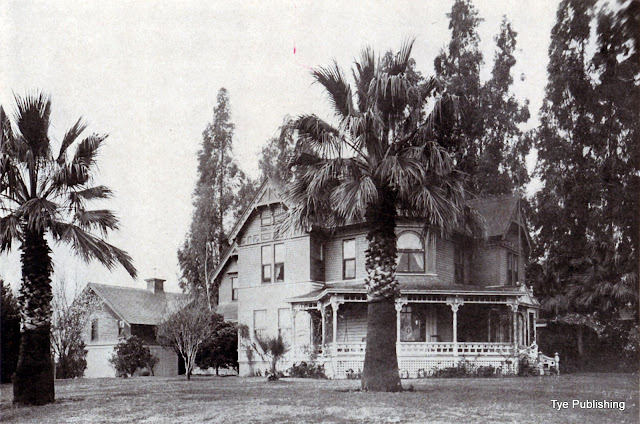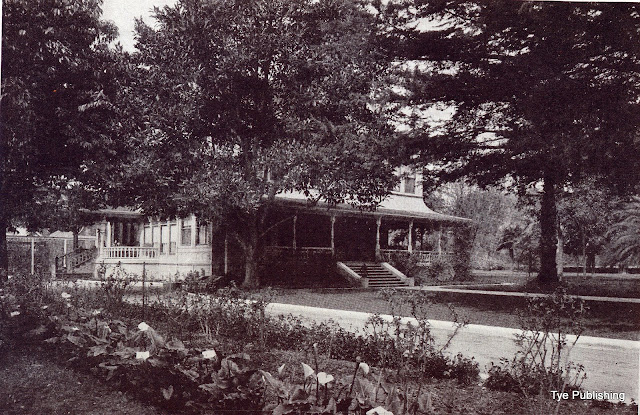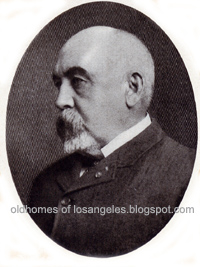 |
| Busch Gardens, Van Nuys in 1968--plant is the building at back right |
Adolphus Busch (1839-1913) was a successful brewer, emigrating from Germany, then partnering with his wife's father in St. Louis. His idea of using pasteurization and of creating a light lager that was acceptable to a broad section of the population (it's called Budweiser) made him a very wealthy man.
 |
| Cravens Residence, ca. 1903 |
Evidently it had been in the plan to develop the arroyo behind the house into lush walking gardens from the beginning, and by 1909 it was one of the most popular tourist attractions in Southern California, with trolley car lines announcing special "Triangle Trolley Trips" that included the Gardens, Santa Monica, and L.A. oil fields! Adolphus continued to purchase land behind the house (as well as to the north) such that he ended up with over 30 acres in gardens, with major divisions of an upper arroyo and lower arroyo. A significant addition was the purchase of the former Thaddeus Lowe house (he of the famous Mt. Lowe Railway) and gardens in 1910.
| Upper Arroyo Gardens ca. 1915 (Ivy Wall at upper rt. behind trees) Thaddeus Lowe House (with flag) at upper left |
The lower gardens were offered twice to the City of Pasadena, but refused because of perceived high maintenance costs. In 1949 the lower gardens were sold and the property developed into residential lots and houses.
Today remnants of the original gardens rest along each homeowner's property in the arroyo, including the Old Mill, and one of the concrete water fountains, along with some of the original wire fencing. A recent tour in 2010 by Pasadena Heritage allowed tourists to once again see "Busch's Gardens".
 |
| Ivy Wall ca. 1910 with Arlington Drive in front |
And once again in 2014 another Pasadena Heritage tour was organized.
Sources:
1. Sam Watters; Houses of Los Angeles 1885-1919
2. PasadenaGardens.com
3. Postcards of the Gardens











